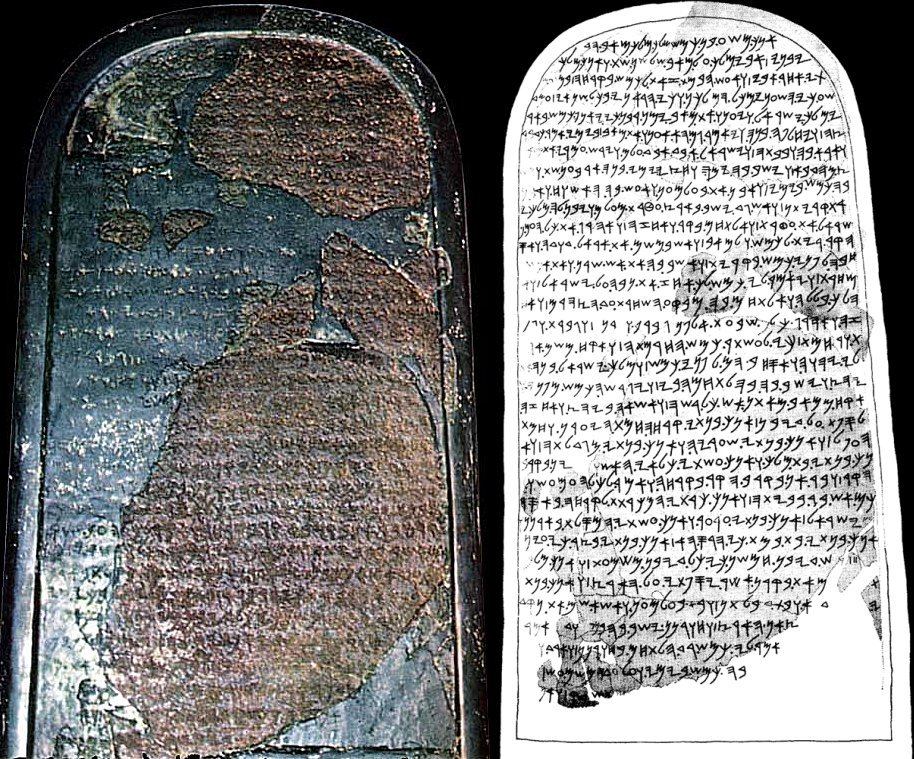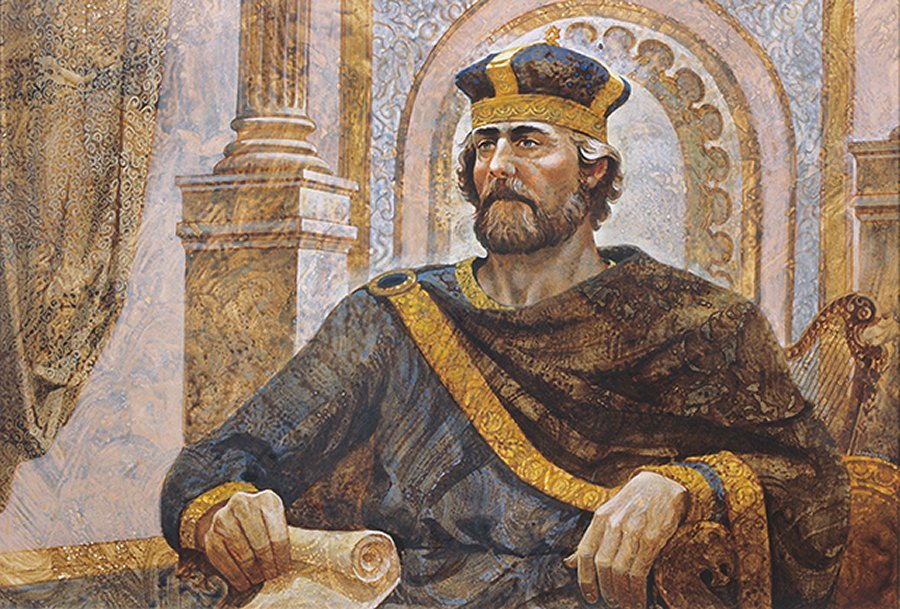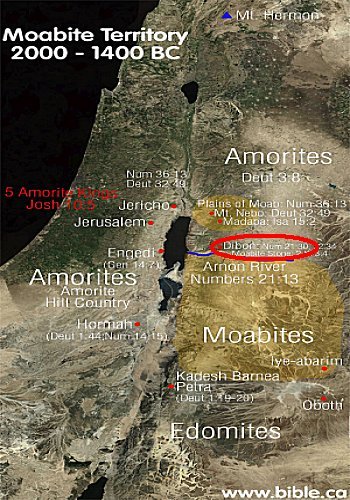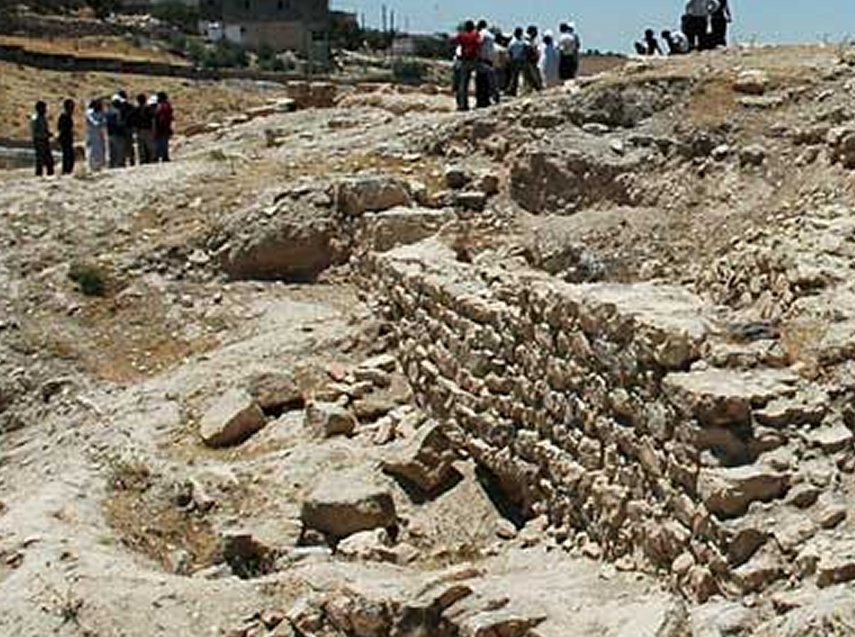Mesha Stele: One Of The Most Valuable Biblical Artifacts
A. Sutherland - AncientPages.com - Mesha Stele, which is also known as the Moabite Stone, is one of the most valuable Biblical artifacts.
It was accidentally discovered among the ruins of Dhiban (Biblical "Dibon," capital of Moab), 20 miles east of the Dead Sea, by a German missionary F. A. Klein in 1868.
The artifact was discovered in 1868 about 20 miles east of the Dead Sea. What is most amazing is that it mentions "Israel," "Yahweh" and the "House of David." Image: Bible History
The artifact was a bluish basalt stone, about 4 feet high (about 142cm) and 2 feet wide, and 14 inches thick. It was erected and inscribed by Moabite King Mesha.
When it was found the Berlin Museum quickly negotiated for it while the French Consulate at Jerusalem offered more money.
Considered a valuable and spectacular find, the stele became an object of great interest of the Berlin Museum and the French Consulate at Jerusalem. The local Bedouin tribe was in possession of the artifact, but fearing the loss of it, decided to destroy it. They hang it on a rope and repeatedly dipped it in fire and water until it fell apart.
Most of the inscriptions, over thirty verses, were later reconstructed from the recovered fragments and assembled by Charles Clermont Ganneau, a renowned French Orientalist and archaeologist.
King David Enthroned, by Jerry Harston
The inscription has 34 lines, and it is the most extensive inscription ever recovered that refers to ancient Israel. It was written in Paleo-Hebrew alphabet (a variant of the Phoenician alphabet).
Not much is known about King Mesha, one source is the Hebrew Bible and the other is the Mesha Stele saying:
"I am Mesha, son of Chemosh[-yatti], the king of Moab, the Dibonite. My father (had) reigned over Moab for thirty years, and I reigned after my father. And I made this high place for Chemosh in Qarcho … because he has delivered me from all kings, and because he has made me triumph over all my enemies…." and another source is the Hebrew Bible:
"Now Mesha king of Moab was a sheep breeder, and he regularly paid the king of Israel one hundred thousand lambs and the wool of one hundred thousand rams. But it happened, when Ahab died, that the king of Moab rebelled against the king of Israel." (2 Kings 3:4-27).
The king's name: "Mesha" is based on the Hebrew word "to save", but it has also been suggested that his name may be related to the Hebrew "Moshe" (Moses). While his personality is rather obscure, he left a clear message on to the stone, which gives us a glimpse of historical events, which were important for the Moabite Kingdom.
The text is a reminder of Mesha's heroic struggles with King of Israel, Omri and his son Ahab and how he got freed from the influence of Israel after many years of captivity. As we remember, the Bible gives the Messiah a similar story (2 Kings 3) but it is not clear, however, whether it describes the same battle as the Mesha Stele does.
The inscription also tells that king ordered repairs of the walls, built a palace and water tanks. It was extremely important because of the drought in Moab, (now west-central Jordan), which in Biblical times was the kingdom of the Moabites (14th century BC to 582 BC), who were closely related to the Israelites but frequently in conflict with them.
Dibon excavations. Image credit: Bible Places.com
Word: "Israel" is mentioned several times and so is "Yahweh" in verse 18:
"…And from there I took the vessels of Yahweh, and I presented them before the face of Chemosh..."
It appears that king Mesha knew about the Israelite God Yahweh and says he took "the vessels of Yahweh and presented them before the face of Chemosh", the god of the Moabites, according to the Hebrew Bible.
It is the first appearance of the name of the God of Israel in the Moabite language and Phoenician alphabet.
Moreover, line 31 is very significant because it bears the phrase the "House of David".
The existence of King David has been long questioned by scholars. When French scholar Andre Lemaire (who spent seven years studying it) was investigating the inscription, he determined that the same phrase appeared there in line 31. Lemaire was able to identify a previously faint letter as a "d" in the phrase "House of David." This phrase was used commonly in the Old Testament for the Davidic Dynasty, also referred to as the "House of David".
Much more have to be discovered to confirm the existence of the great King David, the founder of the ruling dynasty of Judah, the "House of David". So far he is mentioned in the Mesha Stele and on the pages of the Bible.
Other artifacts would confirm the existence of this historical figure of Biblical times.
The Mesha Stele is now stored in the Louvre of Paris and its copy is in the British Museum in London.
Written by – A. Sutherland - AncientPages.com Senior Staff Writer
Copyright © AncientPages.com All rights reserved. This material may not be published, broadcast, rewritten or redistributed in whole or part without the express written permission of AncientPages.com
Expand for referencesMore From Ancient Pages
-
 Shaka Zulu: African Hero And One Of Greatest Military Leaders Of All Time
Featured Stories | Nov 5, 2016
Shaka Zulu: African Hero And One Of Greatest Military Leaders Of All Time
Featured Stories | Nov 5, 2016 -
 On This Day In History: Supernova Observed In Constellation Lupus By Chinese And Egyptians – On May 1, 1006 AD
News | May 1, 2016
On This Day In History: Supernova Observed In Constellation Lupus By Chinese And Egyptians – On May 1, 1006 AD
News | May 1, 2016 -
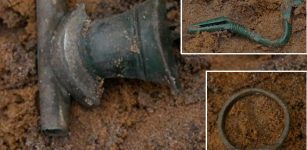 Four Roman-Era Brooches And A Ring Found In The Borki Forest, Poland
Archaeology | Mar 15, 2024
Four Roman-Era Brooches And A Ring Found In The Borki Forest, Poland
Archaeology | Mar 15, 2024 -
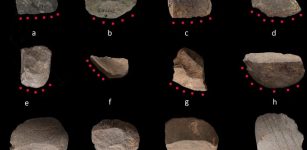 Earliest Evidence Of Rice Harvesting Provided By China’s Ancient Stone Tools
Archaeology | Dec 8, 2022
Earliest Evidence Of Rice Harvesting Provided By China’s Ancient Stone Tools
Archaeology | Dec 8, 2022 -
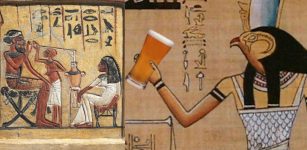 Beer Was Used As Medicine And Payment In Ancient Egypt
Ancient History Facts | Feb 11, 2018
Beer Was Used As Medicine And Payment In Ancient Egypt
Ancient History Facts | Feb 11, 2018 -
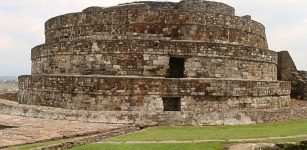 Ehecatl: The Snake-Bird Deity And God Of Wind Feared And Respected By The Aztecs
Aztec Mythology | Aug 26, 2016
Ehecatl: The Snake-Bird Deity And God Of Wind Feared And Respected By The Aztecs
Aztec Mythology | Aug 26, 2016 -
 Strange Ancient Accounts Of Fourth Dimensional Phenomena
Featured Stories | Jun 7, 2018
Strange Ancient Accounts Of Fourth Dimensional Phenomena
Featured Stories | Jun 7, 2018 -
 Fascinating Ancient Legend Of Jason And His Argonauts Was Based On A Real Expedition To An Ancient Kingdom
Greek Mythology | Dec 3, 2014
Fascinating Ancient Legend Of Jason And His Argonauts Was Based On A Real Expedition To An Ancient Kingdom
Greek Mythology | Dec 3, 2014 -
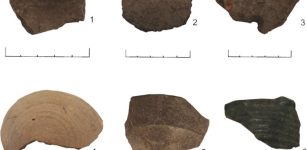 Earliest Evidence Of Wine Consumption In The Americas Found In Caribbean
Archaeology | May 23, 2023
Earliest Evidence Of Wine Consumption In The Americas Found In Caribbean
Archaeology | May 23, 2023 -
 Deciphered Ancient Stone Tablets Contain Sacred Knowledge That Could Re-Write History
Civilizations | Aug 28, 2018
Deciphered Ancient Stone Tablets Contain Sacred Knowledge That Could Re-Write History
Civilizations | Aug 28, 2018 -
 Meidum ‘Collapsed’ Pyramid Of Great Builder Pharaoh Snefru
Featured Stories | Jan 2, 2017
Meidum ‘Collapsed’ Pyramid Of Great Builder Pharaoh Snefru
Featured Stories | Jan 2, 2017 -
 Sir Christopher Wren – Genius Mind Of Most Influential British Architect Of All Time
Featured Stories | Feb 22, 2016
Sir Christopher Wren – Genius Mind Of Most Influential British Architect Of All Time
Featured Stories | Feb 22, 2016 -
 Mysterious 70-Million-Year-Old Underground Village And Magnificent Tower Of Eben-Ezer In Belgium
Featured Stories | Mar 20, 2017
Mysterious 70-Million-Year-Old Underground Village And Magnificent Tower Of Eben-Ezer In Belgium
Featured Stories | Mar 20, 2017 -
 11,000-Year-Old Human Remains Found At Heaning Wood Bone Cave In Britain
Archaeology | Jan 25, 2023
11,000-Year-Old Human Remains Found At Heaning Wood Bone Cave In Britain
Archaeology | Jan 25, 2023 -
 Ancient Intercontinental Underground Tunnels Built By Survivors Of A Great Catastrophe And The Snake God Connection
Featured Stories | Jul 4, 2018
Ancient Intercontinental Underground Tunnels Built By Survivors Of A Great Catastrophe And The Snake God Connection
Featured Stories | Jul 4, 2018 -
 Halloween: Facts And History About All Hallows’ Eve And Its Connection With Samhain – An Ancient Celtic Festival
Ancient Traditions And Customs | Oct 31, 2021
Halloween: Facts And History About All Hallows’ Eve And Its Connection With Samhain – An Ancient Celtic Festival
Ancient Traditions And Customs | Oct 31, 2021 -
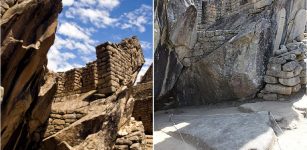 Unique Temple Of The Condor In Machu Picchu: 3D Spectacular Inca Stonemasonry
Civilizations | Sep 21, 2016
Unique Temple Of The Condor In Machu Picchu: 3D Spectacular Inca Stonemasonry
Civilizations | Sep 21, 2016 -
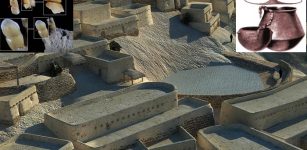 4,000 Years Ago Women Of El Argar Used Their Teeth As Tools
Archaeology | Nov 10, 2020
4,000 Years Ago Women Of El Argar Used Their Teeth As Tools
Archaeology | Nov 10, 2020 -
 Unexplained Mystery Of Secret Knowledge And Extraordinary Sightings Hidden In An Author’s Book
Featured Stories | Nov 25, 2021
Unexplained Mystery Of Secret Knowledge And Extraordinary Sightings Hidden In An Author’s Book
Featured Stories | Nov 25, 2021 -
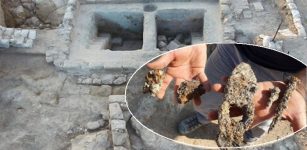 1,400-Year-Old Iron Hammer And Nails Among Findings At Sanhedrin, Western Galilee’s Usha
Archaeology | Nov 6, 2019
1,400-Year-Old Iron Hammer And Nails Among Findings At Sanhedrin, Western Galilee’s Usha
Archaeology | Nov 6, 2019

